King Boat Works is a name that is synonymous with some of the highest-quality wooden rowing shells available in the world today. Behind the company name is Graeme King, who has been designing, building, and rigging rowing shells for more than 45 years. For the past 23 years, he has been working out of his own shop in Putney, Vermont. This year marks the 25th anniversary of the Kingfisher, a single shell designed by King. A few years later, her sistership, the double Kookaburra, came on the scene. Named for feathered friends from the designer’s native Australia, these birds can fly.The Kingfisher shell, like her namesake, is sharp-nosed, sleek, and fast. While the kookaburra is not a cousin to the kingfisher in the wild, the double shell of that name mimics the Kingfisher design. Because the Kookaburra is essentially an elongated version of the Kingfisher and most of its elements are identical, I will omit the Kookaburra from much of the following discussion. Graeme King (shown) has devoted his career to designing and building wooden rowing shells. He developed the Kingfisher single for the home builder who desires a fast and elegant recreational shell.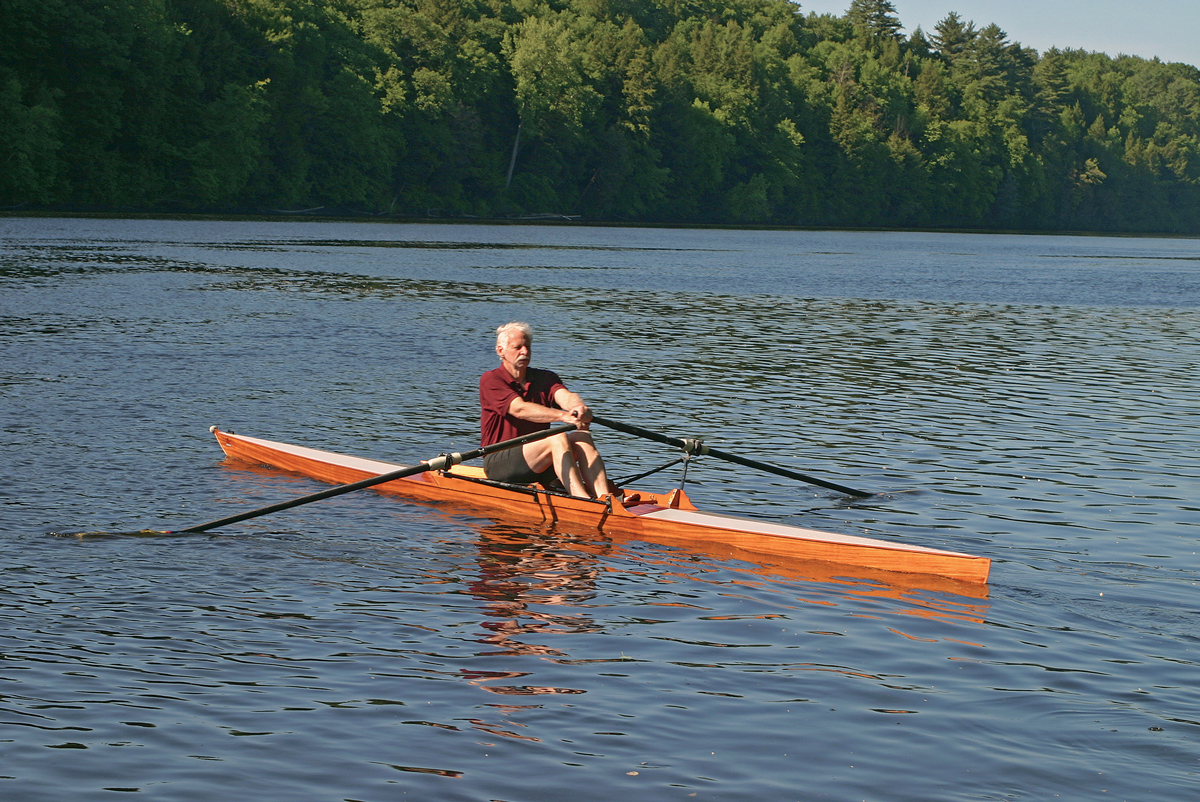 Photo by Karen Wales
Photo by Karen Wales
Join The Conversation
We welcome your comments about this article. If you’d like to include a photo or a video with your comment, please email the file or link.
Comments (13)
Leave a Reply
Stay On Course

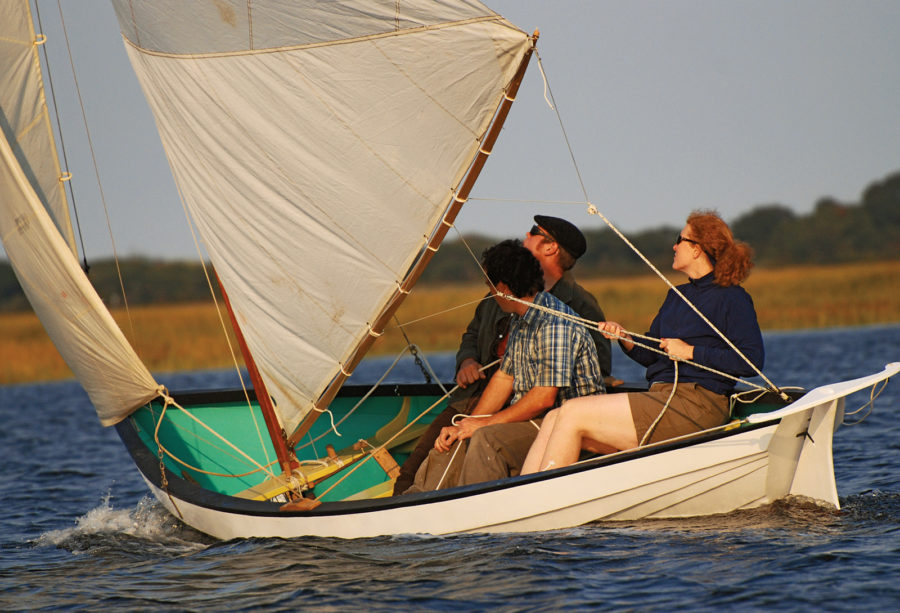
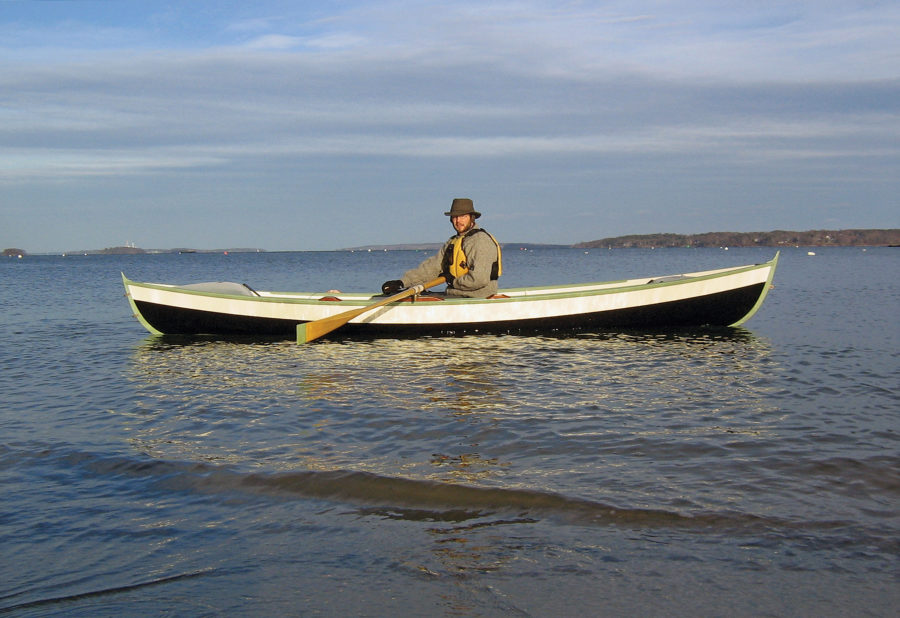
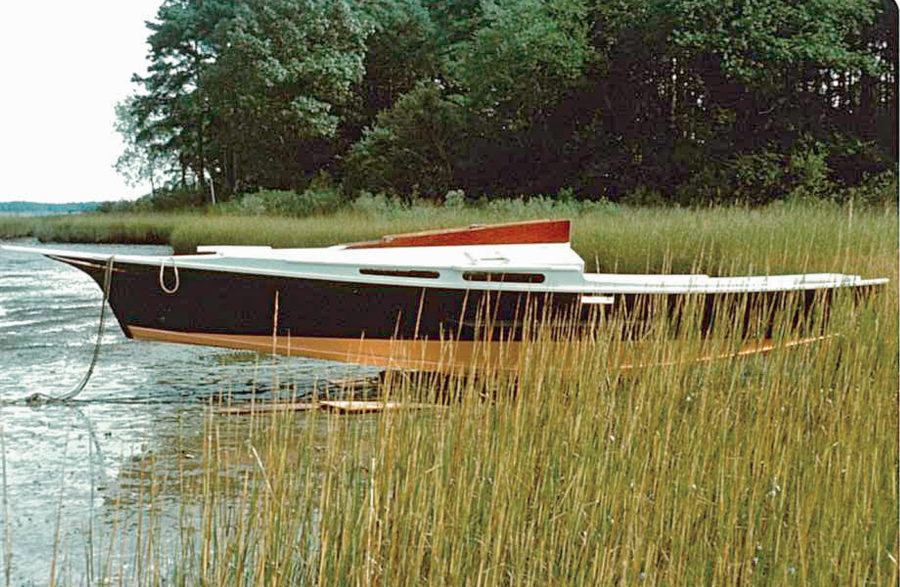
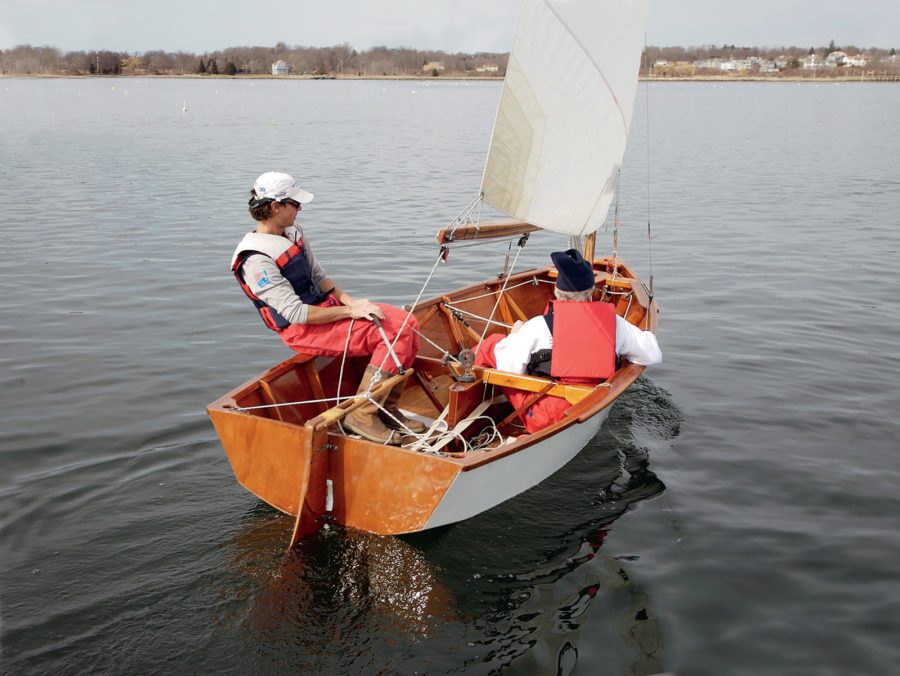
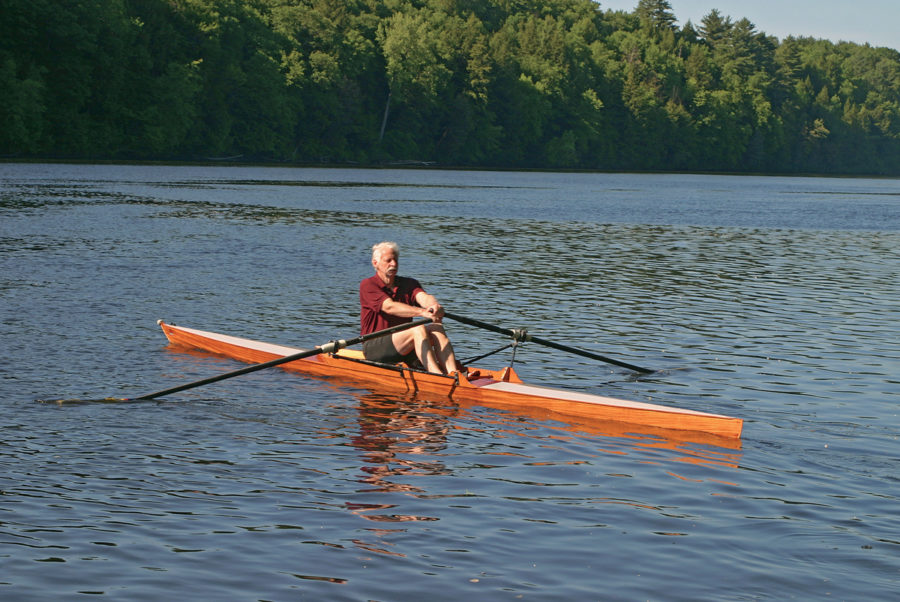
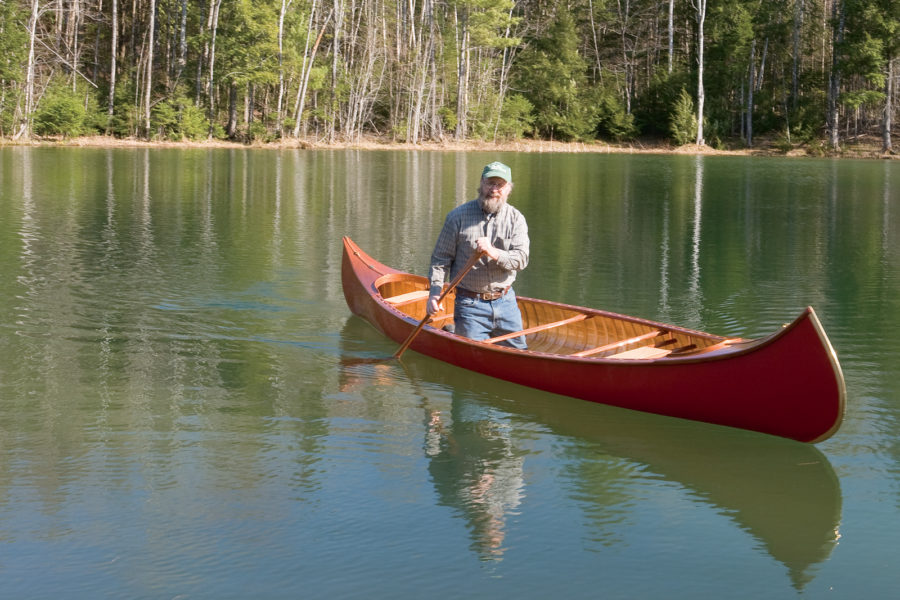
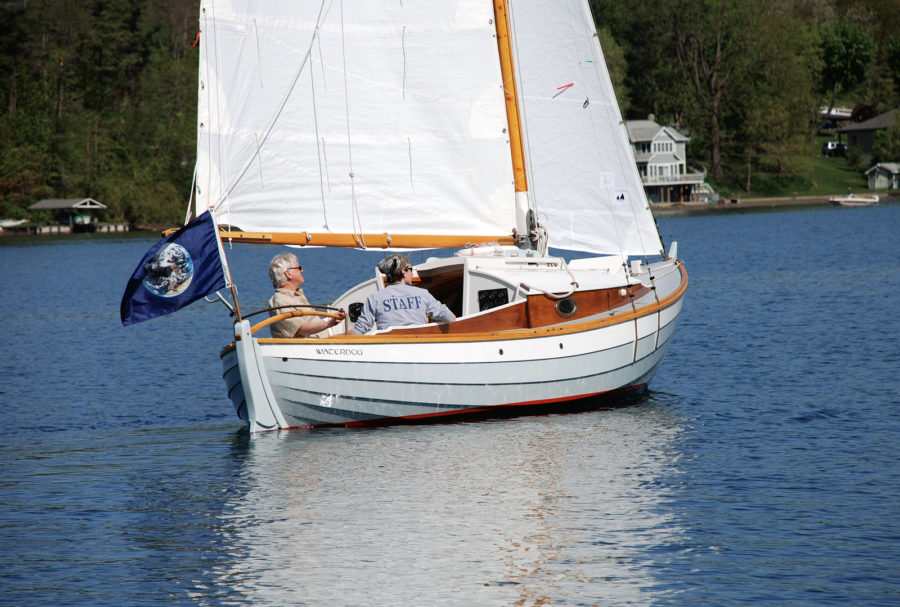

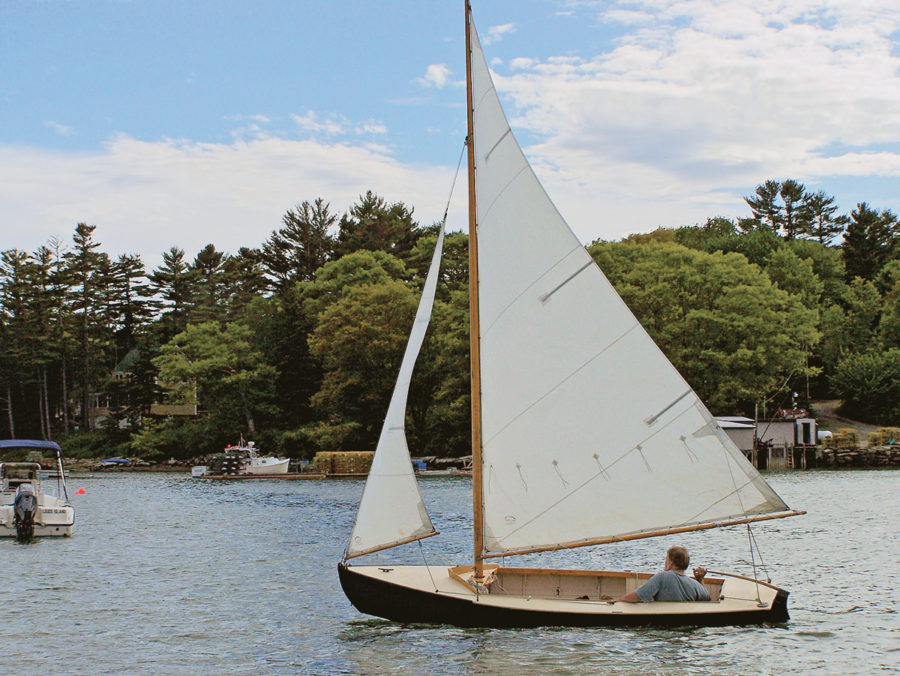
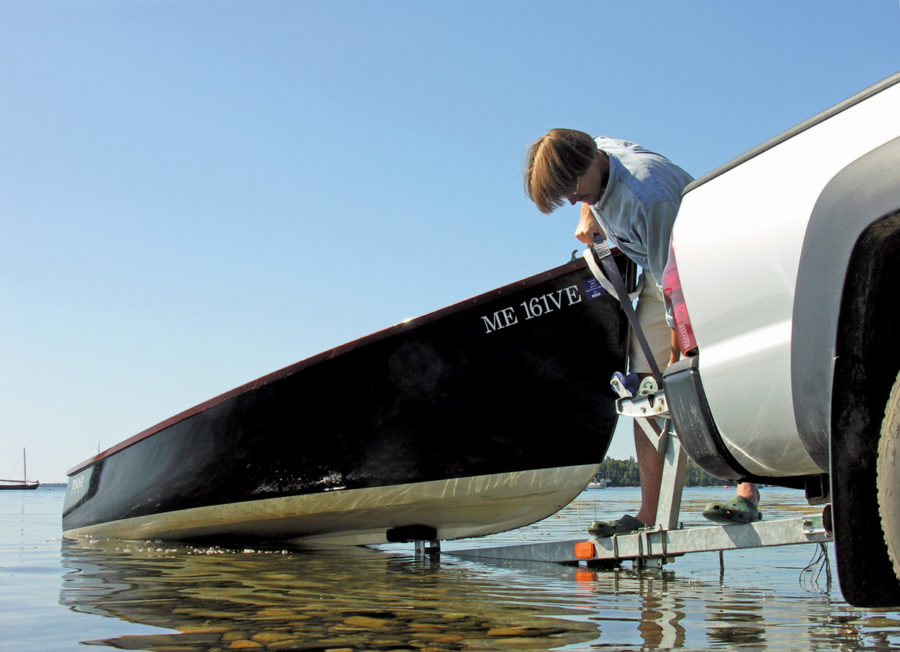
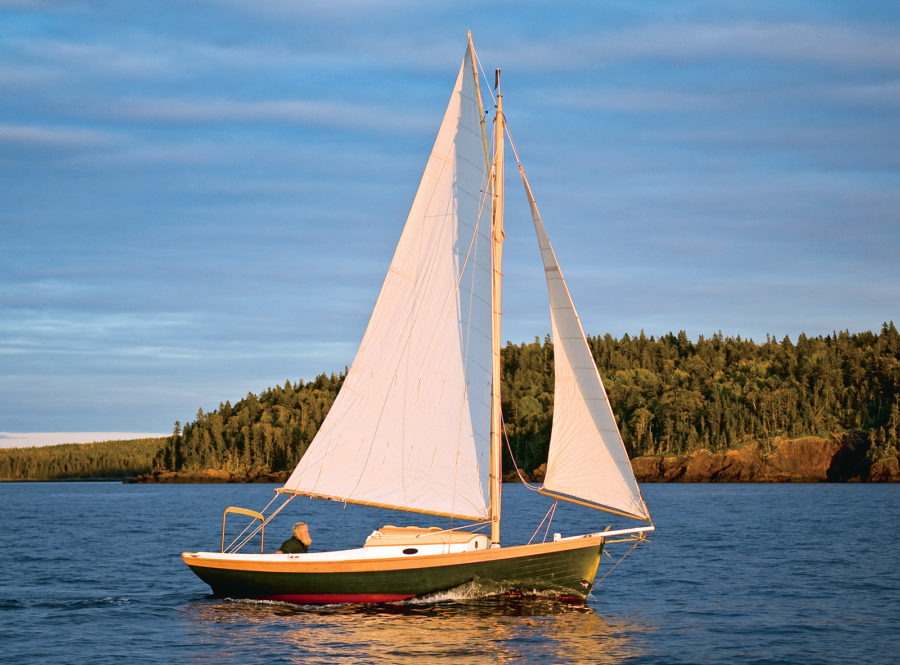
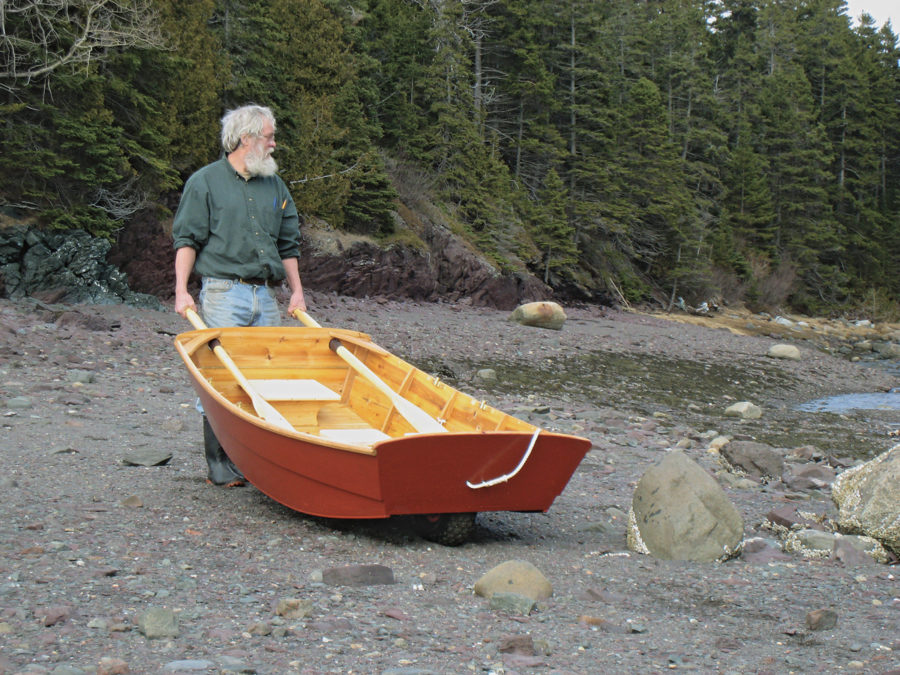
Hi Karen,
I’m now retired (but not for long it seems) and living back in South Australia.
Last year I was busy renovating the house I purchased as well as getting a small workshop and design office set up so hopefully I can finish up some more designs for the home builder, but all this up takes time especially at my age.
All the best,
Graeme
Graeme,
I’m an old rower from a time when all racing shells were moulded ply and we knew how to get in and out of a shell by standing on the keel. I have longed for a nice varnished hull and was wondering if the Kingfisher’s hull could be adapted to the rounded section of a racing shell.
Thanks,
Rob
Hi Graeme
I’m very interested to know of your Kingfisher kits or used shells for sale in Australia. I started competitive rowing in 1953 in New England (USA) and your shells enraptured me, especially as a master sculler for 22 years. I’ve built several small plywood boats and Kingfisher looks like a perfect transition from offshore sailing now that I’m 85.
Hello Graeme ,
I posted a question earlier about the max load recommended on the Kookaburra !?
I cannot find the info anywhere…I found 220 for the kingfisher…but I doubt it’s just twice that for the Kookaburra (would be too simple ) … I know there are formulas around to calculate that…but I haven’t found any yet (simple enough for my ability…)
Many thanks in advance … best from Bordeaux France
Just a bit of antipodean ornithology. The statement “While the kookaburra is not a cousin to the kingfisher in the wild, …” startled me.
In the wild, the Kookaburra and the Kingfisher are not only closely related but belong to the same family, genus Dacelo.
Kookaburras are very large, tree-dwelling kingfishers and the largest member of the Kingfisher family.
The Kingfisher design was the first of three shells I have built to King’s design. Since I finished it in 2000, I have built a strip-built double/pair and wood/carbon single with a stern-mounted wing rigger which I still row 70 times a year since 2006. Of those boats, the Kingfisher was the most comfortable to row. I loved that boat, it fit me like a well-broken-in pair of blue jeans. I rowed in Buzzards Bay, Cape Cod ponds, even on a rowing/camping trip on the upper Connecticut river. I sold that boat when I had built the new single but I do miss it still, particularly when the SW winds start to kick up Sippican Harbor. I do agree with Ms. Wales that it is no boat to be in on open water.
My only complaint was I never was wild about the “soft” deck. I found it a little too delicate for my brand of “Gypsy rowing”. My current boat has a “hard” composite-and-wooden deck, which is very much tougher and more suitable for the extensive car topping I engage in.
Hi Richard. I appreciate your experience with the Kingfisher. What was your ‘hard’ deck material and weight, did it add stiffness and torsion strength? It sounds suited to my use in Australia. What sort of car-top cradle and protection do you have? What is a stern-mounted wing rigger?
Lots of questions! And good to sort things before construction…
Cheers
Andrew
Graeme, great to hear and see you in action again. I did finish the sectional (3 x 9′ sections) single racer based on your plans for 85kg weight. Would love to send you some pics of the finished boat. The mating plates for the sections work beautifully and I take it to a local lake here in Savannah, GA regularly.
Hope to talk or email soon.
Bill
Graeme, we talked a couple of times before you left the states. I am using the Kingfisher as a practice build before I start the double. I am putting the ash strips on but since I am a total neophyte to boat building I’m not sure about how they should look when finished. Close-up pictures would help. Profile and side view. I am keeping a notebook full of my mistakes and how I fixed them so I’ll be ready to tackle the Kookaburra.
Hi Graeme,
Do you know of any plans for a racing shell? I’ve yet to see any except an incomplete set (damaged) for a Phelps single and the plans that are in Darryl Strickler’s wonderful book, Rowable Classics. Building a single may be out of the technical reach of most of us, but surely plans must exist.
Roger Slaymaker
I have a beautiful rounded-hull King single which has a curved, not straight, stern. When I’m sculling well, the boat produces a rooster tail of water off the stern.
My boat has wooden decks and is kept in a boat shed which is over water. For some reason or other, small bubbles developed in the varnish on the hull, but not on the deck. I’ve sandpapered the hull down and am about to revarnish it with International Goldspar Original premium Marine gloss varnish, but I wondering why the problem developed. I’d be grateful for any suggestions.
For example, should I remove the two access disks when the scull is in the shed, or simply loose them slightly when slinging the scull in the shed, or not loosen them at all?
I plan to build a Kookaburra … and unfortunately, haven’t been able to find anywhere, its maximum load capacity !?
If anyone has the info … it will be very helpful! And I thank you in advance.
Hello Graeme,
I built the Kingfisher back in 1986, then I developed a similar boat with a round hull bending 2mm – 3mm okoume panels in a jig. You designed and sold me the riggers for these boats in 1993 and I sold four, but kept the prototype. The boat was stored at my daughters, she removed the riggers, and now they are apparently lost!! Would you by chance still have the specs for those riggers and could you produce another pair.